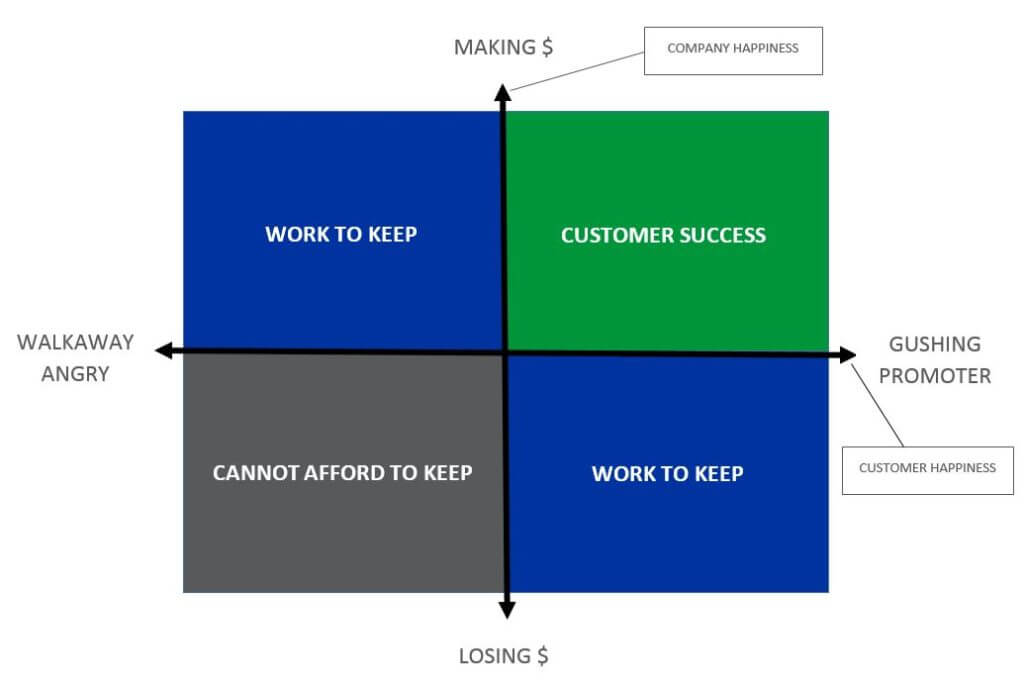How Does Company Success Tie in to Customer Success?
Last time I introduced the concept of a customer happiness continuum. This continuum ranges from the “walkaway angry” customer who moves to a competitor as soon as they are able to the “gushing promoter” who praises our work as having gone beyond their expectations. While we may have difficulty measuring happiness, we can intuitively place our customers somewhere along this continuum.
But is that all that “customer success” entails? Can we define “customer success” merely as movement along this continuum (the farther to the right the point is, the greater the customer’s “happiness”)? Or does something else factor into the equation?
For instance, can we have customer success without company success? Is it customer success if we have a customer who continually beats us for very little return but continues to buy? Hard question. We may have the happiest customers on the planet who continue to buy but if we are doing unnatural or money-losing activities to keep them happy, is anyone really benefiting? Shouldn’t the customer want the company to be successful too? Because if they are then they can direct more energy into enhanced support for the customer and both would mutually prosper.
I suggest that customer success is the intersection of customer happiness & company happiness (e.g. profitability). But it is more than a point – it is a quadrant as shown below:

Of course, this model is simple and it doesn’t work in all cases but I think it makes sense generally. The customer success quadrant contains those customers who are happy and create happiness for our company; profit is one example measure of company happiness. Note that there are levels of success. Moving diagonally up and right in the quadrant is better than being by the intersection point. A highly profitable customer who is neutral constitutes a business risk.
I also don’t think that we want to keep customers who are both dissatisfied and cost our company happiness (money). Again, this is a continuum so maybe customers in this quadrant can be recovered if they are slightly dissatisfied and costing us only a bit. We really need to assess the situation closely to determine if we continue to invest in that account. This takes discipline and confidence.
The “work to keep” quadrants are either profitable despite our customer unhappiness or happiness despite costing us money. Because we have a positive measure in both, we should attempt to rectify the dissonance.
Maybe we don’t have proper expectations alignment with our customer who continues to buy and they are a flight risk. We should take some actions to fix the problem(s) so we can keep a profitable customer. If we lose money on a happy customer, it could also be symptomatic of missed expectations in the other direction or perhaps our service delivery processes need to be made more efficient.
Next time I will expand on the relationship between customer happiness and company happiness and discuss why a mutually “happy” relationship is necessary to maintain customer success. To do this, I will explore the various goals of customer success and share some insight into what actions Source takes to ensure that we meet those goals and thereby boost our relationships with our partners to new heights.
To keep up with all of Source’s latest news and conversation, follow us on Twitter, Facebook, or LinkedIn.


